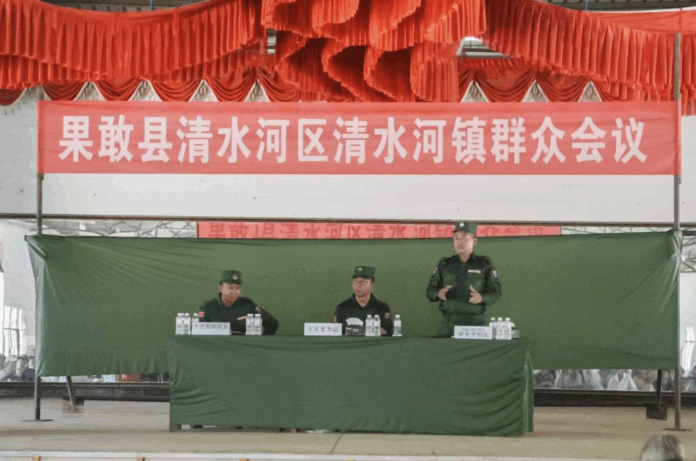
Southeast Asia hosts the world’s largest overseas Chinese population. Based on official data, Chinese communities constitute 22% of Malaysia’s population, 40% of Thailand’s (including those of mixed descent), and a striking 75% in Singapore.
In contrast, Myanmar—despite being the largest nation in mainland Southeast Asia—has never officially counted its Chinese population. Estimates suggest they make up around 8% of the population, or roughly 4 million people.
Yet, Myanmar does not recognize the Chinese as a distinct ethnic group. Only the Han Chinese of Yunnan origin in northern Myanmar are identified as the Kokang people. Other Chinese communities, primarily of Fujian and Guangdong descent in central and southern Myanmar, are absorbed into the broader Burmese people.
The Chinese diaspora in Southeast Asia largely originated from coastal Fujian and Guangdong. From the Song Dynasty onward, seafaring Chinese migrants settled in Lower Burma, thriving in trade and urban commerce. Meanwhile, Han Chinese from Yunnan migrated overland into Upper Burma, especially during the Ming-Qing transition in the 17th century, when Ming loyalists fled into the region and settled in Kokang.
By the 18th century, Kokang emerged as a Chinese enclave under loose Qing oversight, balancing tribute to Burma with cultural autonomy. Qing-Burmese conflicts further spurred migration. British colonization in the 19th century encouraged more Chinese migration, especially to Lower Burma, where Fujianese and Vietnamese Chinese dominated key industries and intermarried with locals.
In 1897, Britain annexed Kokang, integrating its Han population into British Burma, distinct from southern Chinese settlers. Early 20th-century relations were stable, with Chinese political representation under British rule. However, World War II disrupted this balance. The Japanese invasion and Chinese alignment with the British led to violent backlash and long-lasting distrust, signaling the start of Chinese marginalization in Burma.
After Burma’s independence in 1948, the Panglong Conference recognized ethnic minorities’ autonomy, including the Kokang Chinese—descendants of Yunnanese Han in Upper Burma. In contrast, southern Chinese communities (from Fujian and Guangdong) were denied ethnic status and classified as foreign residents, lacking citizenship rights. Fears of Chinese loyalty to China—heightened by Kuomintang incursions and China’s rising power—prompted the government to distinguish Kokang from other Chinese and grant them limited political recognition.
As Cold War tensions grew, Burmese nationalism evolved into Burmese chauvinism, marginalizing minorities. Only Kokang Chinese retained official status, while others faced institutional discrimination in business, education, and citizenship. Unlike Chinese communities in Thailand or Malaysia, Burmese Chinese endured aggressive cultural erasure. In 1962, the military coup led by General Ne Win escalated repression, and by 1963, Kokang’s tribal system was dismantled.
In 1968, Communist forces under Pheung Kya-shin took over Kokang, establishing de facto autonomy. While fragmented Chinese communities in Lower Burma assimilated under pressure, Kokang preserved identity through military resistance. Government efforts erased Chinese culture in the south—schools were nationalized, language banned, and assimilation enforced.
The 1974 constitution excluded Chinese from recognized ethnic groups. In contrast, other Southeast Asian Chinese communities slowly regained rights and recognition. After Cold War hostilities eased, Pheung Kya-shin broke from the Communist Party in 1989 and secured a ceasefire, allowing Kokang to maintain autonomy, funded by the drug trade.
Today, Kokang functions as an unofficial extension of China—using its currency, language, electricity, and curriculum. While most of Burma’s southern Chinese have assimilated, Kokang remains a rare example in Southeast Asia of a Chinese diaspora community that retained armed autonomy, cultural integrity, and regional influence despite state efforts at assimilation.
In the 21st century, Myanmar’s prolonged military rule and isolation have shaped two divergent paths for its Chinese diaspora. The Fujianese and Cantonese Chinese of Lower Burma, once economically dominant, have largely assimilated—losing language, culture, and legal recognition. Intermarriage, conversion to Buddhism, and the disappearance of Chinese schools led to their absorption into Burmese society, with only fading temples and ancestral halls marking their heritage.
In contrast, the Yunnanese Han in northern Myanmar—centered in Kokang—have preserved their identity through autonomy and close ties to China. Unlike earlier generations, recent migrants from Yunnan retained Chinese citizenship, distinguishing themselves as a separate overseas population. Kokang thrived on poppy farming, and later, gray industries like gambling and telecom fraud, benefiting from its legal ambiguity.
Attempts by the Myanmar military to “Myanmarize” Kokang have met resistance. In 2024, Peng Daxun, son of longtime leader Pheung Kya-shin, regained control and began cracking down on fraud networks, hinting at stabilization. Kokang remains deeply integrated with China, using its currency, media, and school curricula, standing as a rare example of a Chinese diaspora that has maintained cultural autonomy and de facto self-governance.
Source: myanmarnow, Reddit, irrawaddy



